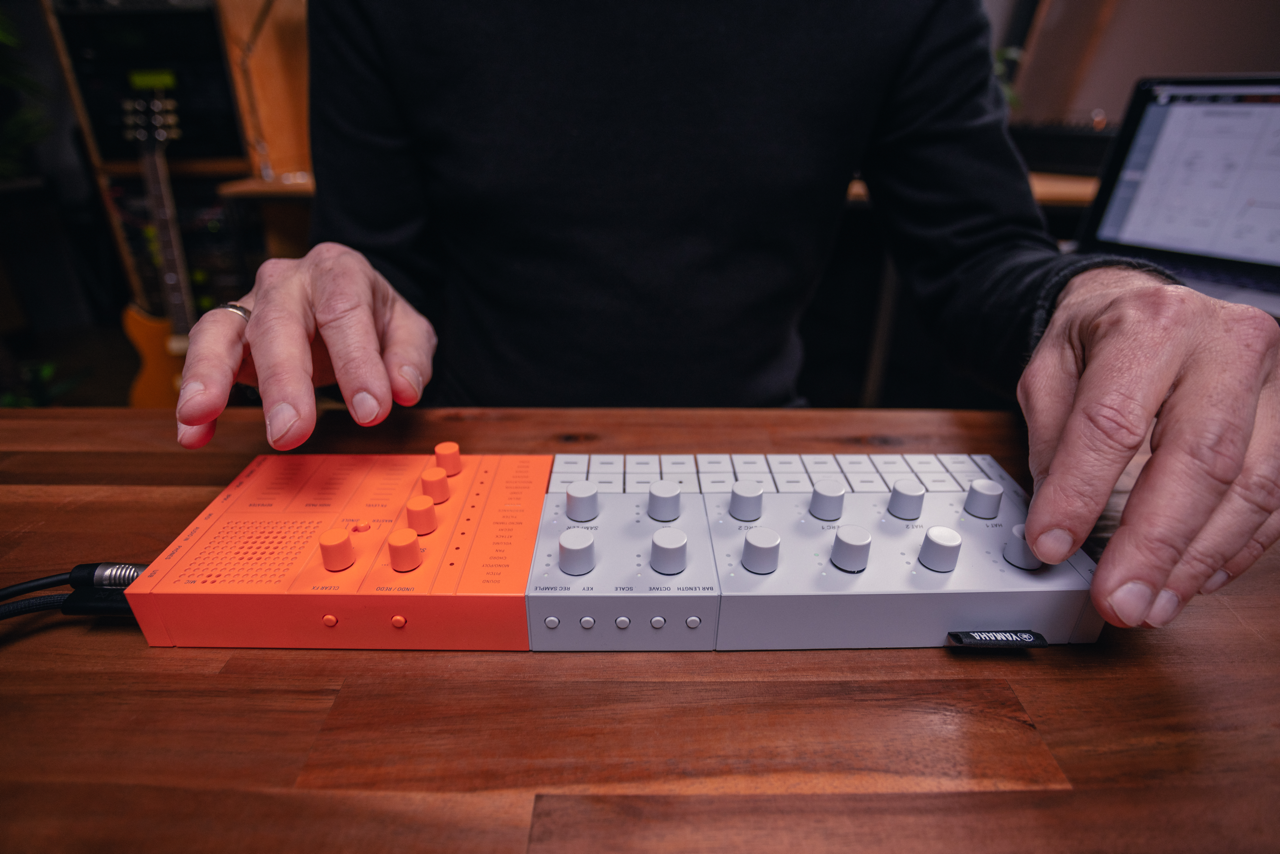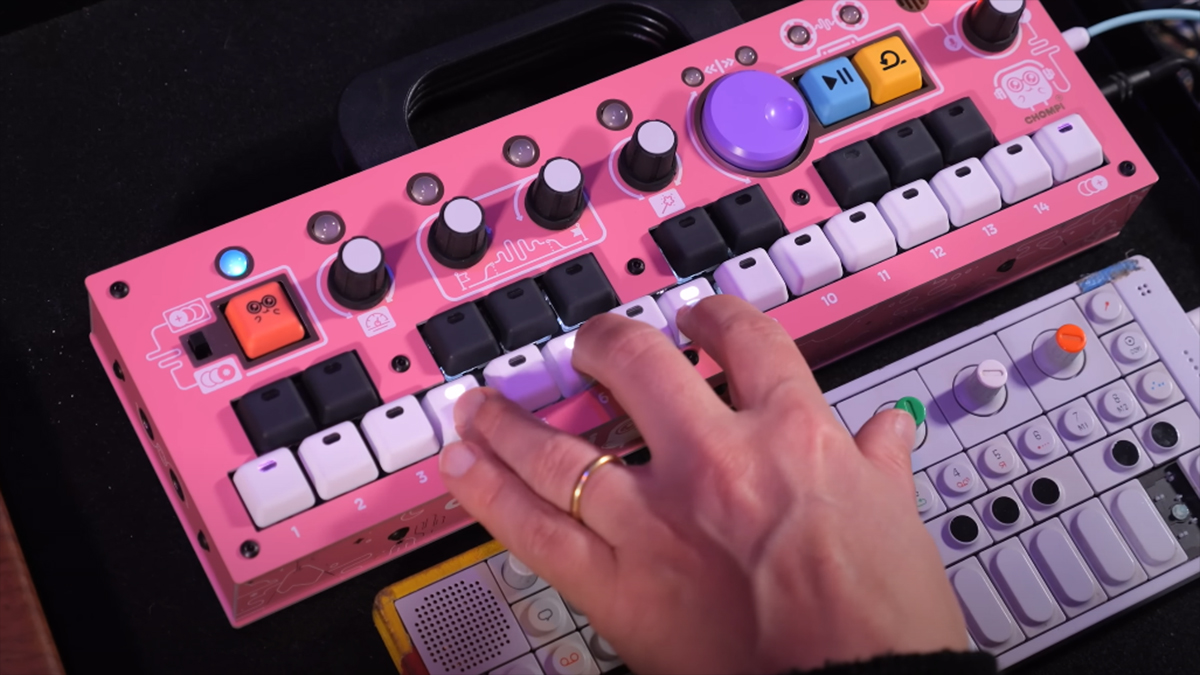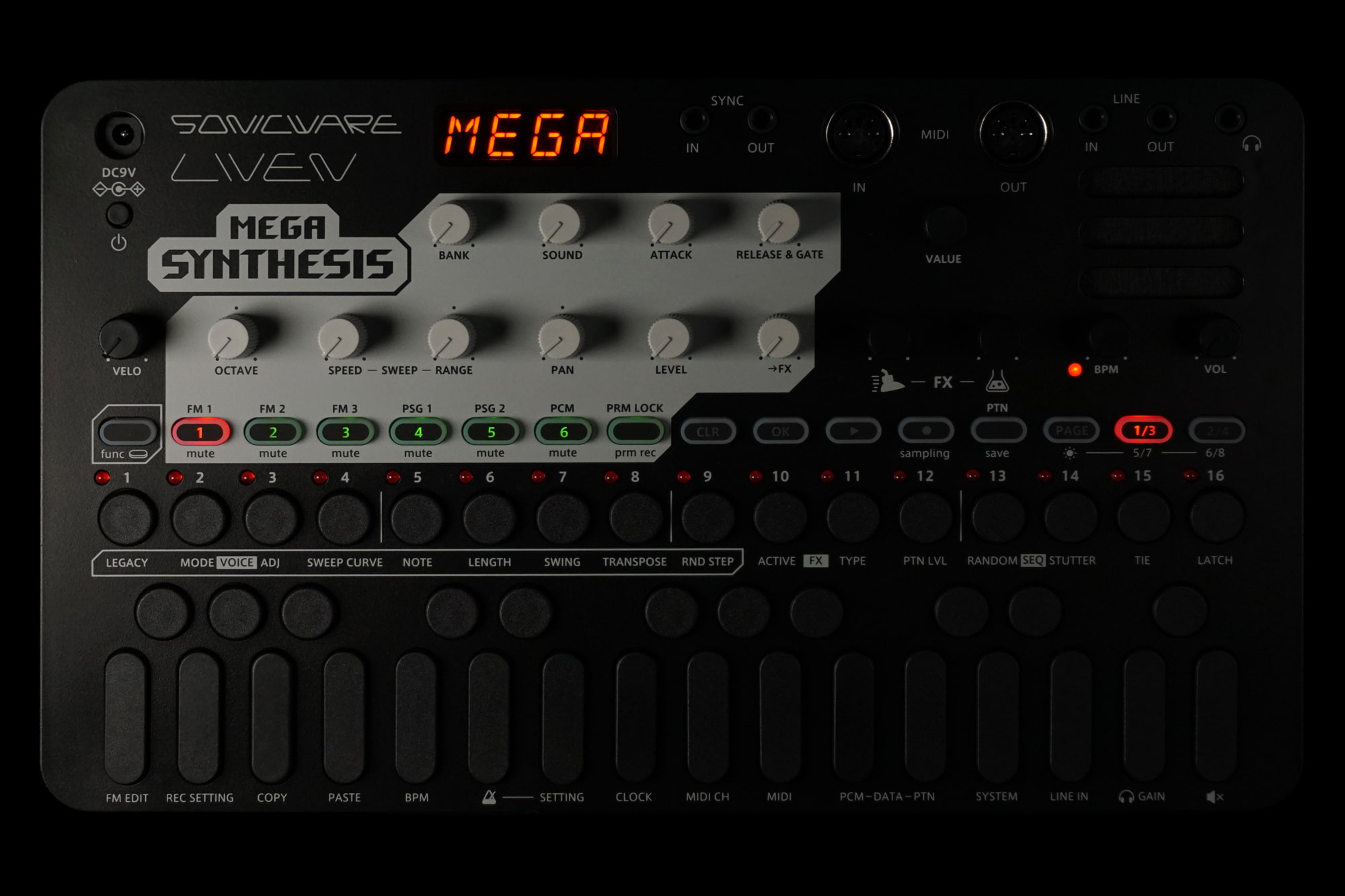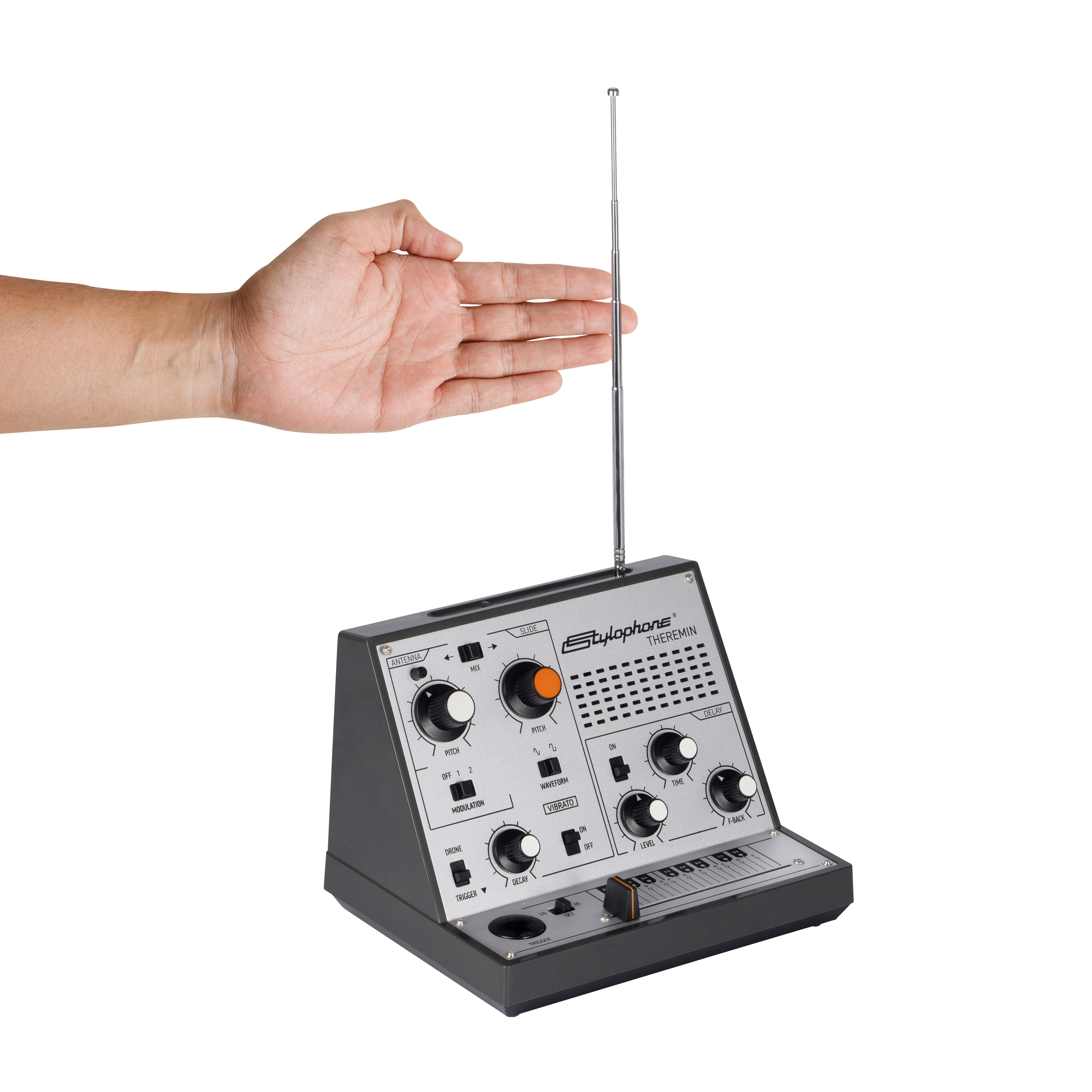The 8 most innovative new music making gadgets of 2024
GEAR EXPO 2024: These must-have production wonders will have your eyes widening and your hands reaching for your wallets

GEAR EXPO 2024: This year is already shaping up to be the year of the gadget! And we're talking devices in all shapes and sizes, all of which don't fit our more conventional instrument categories.
Kisktarter has a lot to answer for in that it is supplying the physical manifestations of ideas from some of the brightest inventors of the planet, many of whom seem to be focussed on music production.
This means that we are constantly surprised and excited by products from many lesser known companies in music production, those lithe enough to go out on a limb and produce something that they 100% believe in, hoping to take some of us along for the ride.
That's not to say the big guns of music technology are holding back in the gadget field – we have big releases from Korg and Yamaha too!
So here we have the best innovations of 2024 thus far, from cute samplers, to video game soundtrackers, welcome to the gadgets of 2024…
Korg NTS-3 KAOSS Pad

Korg's mighty KAOSS Pad is celebrating 25 years of x-y pad sampling and effects this year. The unusual performance sampler and effects box has been used by artists including Brian Eno, Radiohead and Muse, a lot of whom love its unique way of processing audio in real time.
The latest incarnation was announced by Korg at this year's NAMM show, and follows the company's DIY ideology born out in its Nu-Tekt range, that also includes the NTS-1 (as shown above).
Want all the hottest music and gear news, reviews, deals, features and more, direct to your inbox? Sign up here.

NTS-3 KAOSS Pad still includes the x-y touch pad interface and the ability to mix and match four effects, but you can build it yourself (without the need for any soldering), and can also customise its appearance. Korg says you should be up and running in just 20 minutes.
NTS-3 KAOSS Pad should be shipping this June with price info still TBA. There's more info from Korg's website.
Yamaha Seqtrak
A star of this year's NAMM show, Seqtrak is, as Yamaha says, a "standalone music production studio". It includes a step sequencer, drum machine, sampler and several software synths. Seqtrak is also equipped with a microphone, speaker and rechargeable battery, and partners with an app that allows the user to dive into more detailed sound editing.
Working left to right on the unit, you get drums, a synth and sampler in the middle, and sound design and effects on the right. The drum section has seven tracks (kick, snare, clap, two hi-hats and two percussion sounds) that can be filled with sounds from Seqtrak's 2000-sample library, or with your own samples via the Seqtrak app.

Seqtrak has three polyphonic digital synth engines: two based on AWM2 (Advanced Wave Memory) technology, and one, named DX, a four-operator FM engine based on the sounds of the Yamaha DX7 synth.
Seqtrak's sampler can record via the built-in mic or a stereo mini-jack input, resample internally, or play back samples loaded in via the Wi-Fi and USB-C connections. Sounds can be processed through an array of effects that includes 12 types of reverb, 9 types of delay, modulation, distortion and compression, a 5-band master EQ and low-pass and high-pass filters on each track.
Seqtrak is available in either grey and black or white and orange and costs $599.
You can get more info from the Yamaha website and we'll be getting one in for review asap!

Chompi
The Chompi sampler was a Kickstarter hit last year, raising over $1 million of funding, but this year is set to be the big one for this most distinctive of instruments as units are rolled out to its backers and we finally get one in for review.
Chompi's sampling comes by way of a built-in mic and the device instantly maps samples across the two-octave keyboard. These can be edited in a variety of ways, and there are seven voices of polyphony and 14 preset slots.
Samples are stored and arranged temporarily in the Chompi Buffer and Looper Buffer sections, and there are Jammi and Cubbi modes to play samples chromatically or as one-shots. In Jammi mode, you have up to seven notes of polyphony, while Cubbi mode enables you to play up 14 different samples at the same time, and each sample can be tweaked individually.

There are effects including a multimode filter, lo-fi saturation, granular delay-reverb and more, and a tape-style looper enables you to stack-up layers of sounds. The transport knobs control tape scrubbing, loop playback speed/direction and other features.
Chompi doesn’t have a screen, which could potentially make accessing all of these features (and more) a little confusing, but as the demo below shows, a clever combination of interface labelling and flashing lights helps to ensure that the workflow isn’t too complicated. And if you get stuck, the quick start manual is printed on Chompi’s underside).
Chompi will be available for purchase once all the Kickstarter pre-orders have been fulfilled, which should be imminent. It costs $599.
Sonicware LIVEN Mega Synthesis
Sonicware is well known for its FM and lo-fi grooveboxes, but this latest release looks set to be its most entertaining.
LIVEN Mega Synthesis recreates the sound of the Sega Genesis (or Mega Drive in the UK). The original had a YM2612 sound chip, which Mega Synthesis emulates.
The unit has a four-operator, eight-algorithm FM synthesis module which mimics the YM2612's sound. There's also a Programmable Sound Generator module that handles basic waveforms and noise to create nostalgic chiptune-esque tones. Finally, an 8-bit PCM module delivers crunchy sample playback in the style of the Genesis' Z80 microprocessor, with 96 sample slots each of which has between two and eight seconds of sample time.
The synth is equipped with a six-track sequencer (three tracks for the FM synth, two for the PSG module and one for the PCM sample player) with up to 128 patterns, each of up to 128 steps.

Sonicware has enlisted the game composer Yuzo Koshiro, who worked on Sonic The Hedgehog and Streets of Rage, to design 32 presets and 8 patterns for the synth, which join its 320 FM presets and 64 sampled drum kits. Check out some of Yuzo's preset patterns in the video below.
The first LIVEN Mega Synthesis units have already sold out, but a second batch should be shipping as you read this. The synth is priced at $239 and you can get more info from the Sonicware website.
Stylophone Theremin
Next are two iconic music products in one: a Stylophone and Theremin! Dubreq is the brand behind the original Stylophone and its Stylophone Theremin is a new take on the legendary Theremin, an instrument that was controlled using a performer's hand movements.
The original Theremin was equipped with two antennas to control pitch and volume, but Dunbreq's version has just one, which can be used to control the pitch of its oscillator via the hand position. This should make the Stylophone Theremin easier to play than the original.
Stylophone Theremin has two oscillators (sine and square), with one controlled via the antenna and the other via a pitch slider.

Notes are triggered via the button on the unit and their length is adjusted through the decay knob.
The instrument has a modulation control, vibrato and a delay effect, with controls for level, delay time and feedback. It is battery-powered and features a built-in speaker in addition to headphone and line outputs.
Stylophone Theremin is priced at $110/£90 and it is availabe for pre-order. Find out more on Dubreq's website.
Floating Knobs Cuisine
Floating Knobs is a Berlin-based company focussing on "bringing playful but complex instruments to musicians, experimentally inclined nerds and instrument lovers".
Its debut instrument, Cuisine, is a 12-track sequencer specifically for generating rhythms, melodies and modulation signals. Its tracks can each hold eight patterns with 64 steps, and output any combinations of MIDI, CV or Gate. The instrument can store up to 16 12-track projects.
Cuisine also features step sequencing with both traditional and Euclidean sequencing. Tracks can be clocked together or independently, meaning that you're able to design complex polyrhythms across different lanes. Melodies can be dialled in using user-customisable scales that can be applied to individual tracks, while a transposition control makes programming chord progressions quick and simple.

Cuisine's interface is designed to be used with just one hand, so is good for a live performance set-up. There's a great 4x4 grid of old-school keyboard buttons, which can also function as a playable keyboard for entering melodies.
Cuisine can be used standalone or integrated into a Eurorack set-up, and it's equipped with a decent amount of I/O, with 4 CV outputs, 8 gate/trigger outputs, 4 gate inputs, MIDI TRS in/out and a USB-C port.
Cuisine costs €450 and the first units should be available now. Find out more about Cuisine on Floating Knobs' website.

Kiviak Instruments WoFi
It's probably one of the most 'normal' looking instruments in this gadget round up, but Kiviak Instruments seems to have packed a lot of innovation into its brand new WoFi portable sampler.
WoFi is a 'modern take' on keyboard samplers from the '80s and '90s, fusing the features, simplicity and character of these classic sampling instruments with some modern touches.
You can record samples into WoFi via the mic or stereo input, or load them in through WiFi from WoFi's cloud-based sample platform, mywo.fi. Samples can also be loaded via WoFi's dedicated cartridge.
These samples can be played back with 10-voice polyphony and can also be processed through a number of emulations of classic samplers, giving them colour, character or a lo-fi feel. They can then be run through an ADSR envelope and a low-pass filter with 12dB and 24dB slopes.
The instrument includes a 16-step sequencer for creating melodies, and a second sequencer for recording parameter changes.

WoFi's Texturer is a harmonising granular effect described as "halfway between a shimmer FX and granular synthesis". It will also be available as a standalone VST/AU plugin.
WoFi's keyboard is velocity-sensitive and capable of aftertouch. It's also battery-powered which, along with the internal speakers and microphone, mean it is a nicely portable music-making device.
WoFi has ins and outs for line-level stereo audio, CV/Gate, analogue sync and MIDI, in addition to MIDI Thru, a headphone out and a USB connection.
The sampler can be preordered now through a Kickstarter campaign for €599. Find out more on Kiviak Instruments' website.
Suzuki Omnichord OM-108
Finally the Omnichord makes a welcome return this year with the arrival of the OM-108 in July. Originally produced by engineers at Japan's Suzuki Corporation in 1980, the Omnichord has always been an instrument that’s been designed to be used by those with little music making experience, and the OM-108 stays true to this.
There's a set of chord selection options on the left, and a strummable touchstrip to play them. You choose the flavour of your chords with major, minor and seventh buttons, also choosing sus4 and add9 variations.
The OM-108 uses analogue circuitry to emulate the sounds of the classic OM-84 models but also includes new tones. Power up the sound using the new layering options, and the rhythm section has been updated with new drum beats.

The price of Omnichord OM-108 should be around $800, but this price hasn’t been confirmed as yet. We’ll let you know when we have more details or go to the Suzuki website for more info.
Looking for more great new gear? Get all our roundups, news, features, tutorials, tips and more at our Gear Expo hub page.


Andy has been writing about music production and technology for 30 years having started out on Music Technology magazine back in 1992. He has edited the magazines Future Music, Keyboard Review, MusicTech and Computer Music, which he helped launch back in 1998. He owns way too many synthesizers.
